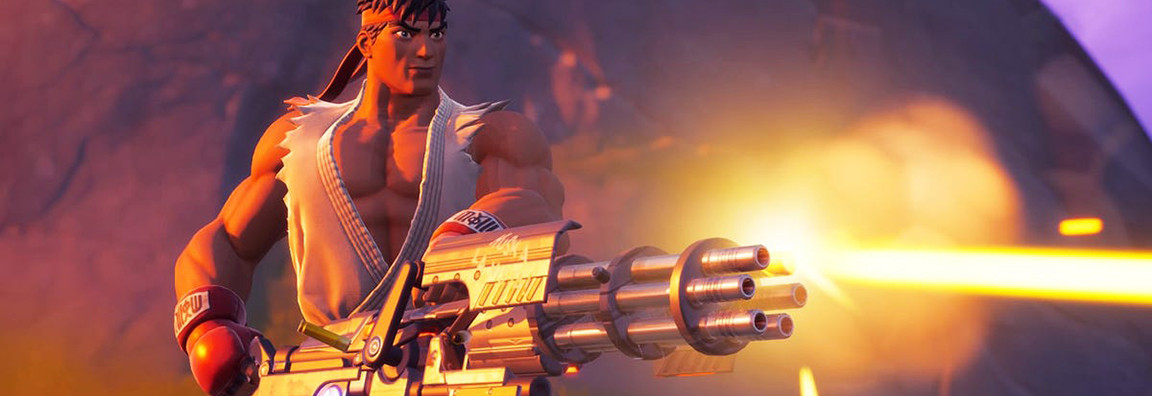I’m sure that title threw a lot of you off, but hear me out. Fortnite isn’t just a battle royale. It is a fighting game in disguise. After playing Epic’s juggernaut as my first competitive, non-fighting game since classic Halo, many skills and fundamentals from fighters actually helped me out. Those core gameplay strats go beyond the simple reactions necessary to excel in both.
The start of a Fortnite match is relatively straightforward. You farm materials, loot weapons, and conserve resources for the endgame while avoiding the ever-shrinking storm. Fortnite transitions into a fighting game in the final few circles. Tactics like resource management, reads, and mixups are integral to win both.
Fortnite has fighting game meter management
Meter management is one of the most important parts of fighting games. In just about every fighter you’ll notice a bar at the bottom of your screen. Once this bar reaches a certain level you’ll be able to unleash a super move or powered-up form of your standard moves, often called “ex-specials.”
Meter pressures foes, gets opponents off you, sets up mixups, and improves position. Material gathering and building in Fortnite is a similar concept.
Imagine gathering materials as building meter and creating builds as spending it on ex-specials. Successful management is the same whether you’re escaping, pressuring, or mixing up opponents. You don’t want to spend meter too aggressively in fighting games or build without purpose in Fortnite. Spending all of your resources in either can lead to an impossible turnaround at decisive moments.
Fortnite requires you to follow your opponent and yourself
Constantly watching yourself is an extremely important skill in both fighting games and Fortnite. The same goes for following your opponent’s movement. Always keep an eye on them no matter what happens. Just like meter management, anticipation is required to win late-game build fights.
The objective during build fights is to lock your opponent into the most uncomfortable position possible while building your own protection at the same time. Keep an eye and ear on your opponent to understand their strategy and maintain an advantageous position. React or anticipate foes to use fewer resources. Both will improve the more you play. The better your reads, the longer you’ll survive.
Fortnite has mixups just like fighters
If you thought fighting game players were the only ones that have to deal with impossible-to-block mixups and crazy setplay (performing a pre-planned, calculated setup after you've knocked your opponent down), then welcome to Fortnite. Different process, same result.
Fortnite mixups are typically performed on opponents boxed in by builds. You can then edit that build to give yourself a clear shot while they’re unaware or place traps in case they escape. The meta goes far deeper when you factor in advanced building techniques and unique equipment.
Condition other players through baits and repetition just like in fighters to create easier opportunities for eliminations.
Training mode is a must in both Fortnite and fighting games
Training mode is something I’d never imagined in battle royales. Aim training is important, but that’s also something you can learn in-game “trial by fire” style. Spend time in Fortnite’s bootleg training mode through Creative maps.
What do you practice in this training mode? Everything!
Like fighting games, Fortnite is full of complex techniques that require practice to put into muscle memory. Fighting games start off with basic quarter-circle motions, whereas Fortnite begins with a basic reinforced ramp build. This turns into a double reinforced ramp, then a dual reinforced ramp, a 90-degree turn, a 180-degree turn, a box tower, 90s, and so on. Not to mention edit patterns and instant edits.
The best part about Fortnite’s creative mode is the ability to load other player’s maps. Search for unique trials that will improve your performance. There’s a map built around every skill in the game.
The similarities between competitive genres have always interested me. After stepping foot into a competitive game that isn’t a fighter after such a long time I can finally experience those shared concepts first hand. So next time you decide to genre jump and have to learn how to play a new game, look for connections between the titles. You’ll get a grasp on seemingly foreign fundamentals a lot faster.
